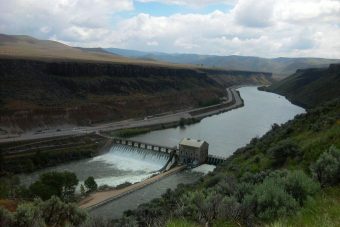
In the western Himalayas, the entire village of Hamal is powered by a small hydroelectric plant on the edge of the Shalvi river. Producing 2MW per hour, the plant provides enough power to light up 100 homes at a time, ending the village’s once-endemic power cuts.
Small hydro projects, producing up to 25MW per hour, have the potential to transform India’s rural communities and are being driven by companies such as Vaishnavi Consultants, which completed the Hamal project in 2014.
The Indian government has said that by the end of March 2017 it hopes privately owned small hydro will be adding 7,000MW per hour to the national grid, enough to power more than a million lightbulbs, although there is little indication as to whether they are on track.
For private companies that invest in small hydro, government subsidies and the growing demand for clean energy ensures a steady income. But after millions of dollars of investment, these plants, even at full capacity, can produce only a fraction of India’s total energy needs, so are they worthwhile?
India’s rapid industrialisation over the last two decades has put pressure on the country’s coal, oil and gas industries to keep up with growing demand as factories have been set up, towns have been built and more than 18,000 villages have become electrified for the first time.
This industrialisation has come at huge environmental cost. Today, India is the world’s third largest emitter of carbon dioxide and its cities are among the most polluted in the world.
While large-scale hydroelectric plants can use moving water to make huge amounts of electricity, there are serious environmental drawbacks. In contrast, small-scale plants, which use much smaller quantities of water, can operate without heavily affecting the river flow, or disturbing the agriculture and wildlife around them.
At the Paris summit last year, the prime minister, Narendra Modi, promised to address carbon emissions by expanding the renewable energy sector to produce an additional 175,000MW per hour by 2022. India estimates small hydro projects could produce up to 20,000MW per hour – as much as a ninth of India’s new renewable energy.
A key benefit of small hydropower generation is that it can deliver local energy to remote communities which are unlikely to get connected to the main electricity grid due to set-up costs, says David Appleyard, a contributing editor for Renewable Energy World magazine. He says they also tend to be easier to finance given the reduced need for major civil infrastructure and capital investment.
Ajay Dogra, engineer and owner of Vaishnavi Consultants, has worked on 35 small hydro projects across India since 2004. These plants provide 24-hour electricity to remote communities in the Himalayas, with any surplus power distributed on the national grid. Dogra says such projects are profitable.
“It costs 9 crore rupees [£1m] to develop a plant that produces 1MW. Once we start generating electricity, the government pays us 3.27 rupees [1p] per watt to buy the energy, and guarantees to continue doing so for 40 years. Within five to seven years you recover your costs.”
Dogra’s small hydro plants provide work for local people, employing approximately 25 people per plant in addition to the casual workers hired on a daily basis during the construction stage. In addition, a small percentage of profit is given, by law, to the local gram panchayat, or village council.
Despite the benefits, building plants can be a tedious process because their construction is often slowed by bureaucratic inefficiency, Dogra explains: “You have to get so many clearances from the government. The project has to be signed off by the water department, the road department, the pollution control board. That process itself takes two to five years.”
Relying too heavily on small hydro could also have its drawbacks in India, which suffers from severe water shortages and drought, says Dr Latha Anantha, water expert at the River Research Centre:
“One small hydro plant is fine, but if you put three or four along the same stream then the cumulative effect can reduce the performance of the plants. Also, they don’t currently need clearances under the environmental impact act, so rules can be clouded, forest can be cut and there will be no one to question it.”
Bharat Lal Seth, an independent rivers expert who has worked with advocacy groups such as International Rivers, says small-scale hydropower needs proper oversight to ensure it benefits communities and does not damage the local environment.
“There are social and environmental concerns about the manner in which small hydropower has been implemented in India. There is need for better scoping and appraisal of sites, as well as monitoring of environmental management plans which are almost always violated by project developers.”
Source: theguardian.com
